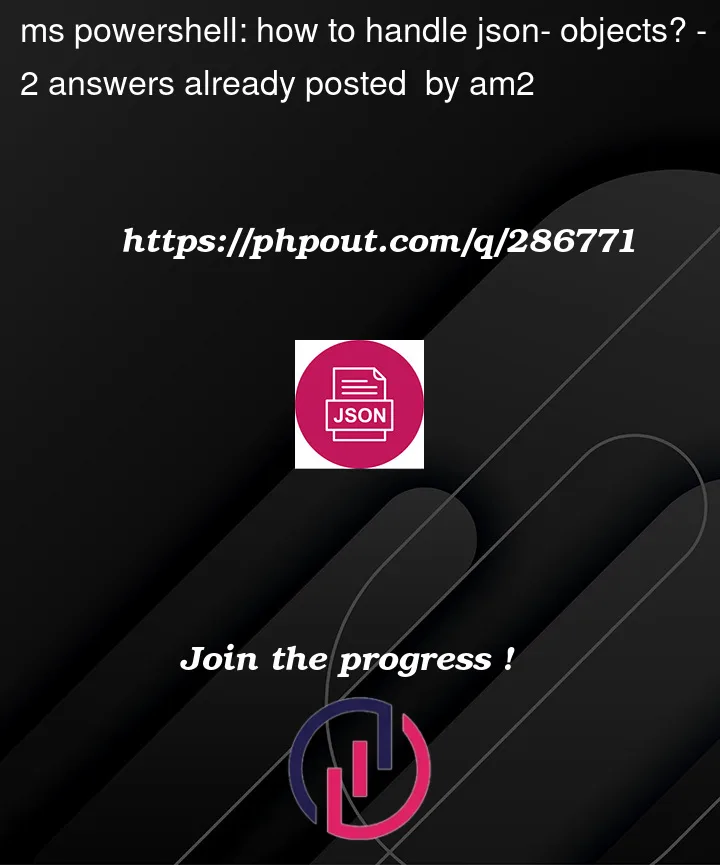I have a file with content
{
"Names" : {"first" : "Chuck", "second" : "Norris"},
"Numbers" : {"one" : "1", "two" : "2"}
}
I can read/write and convert it with ConvertFrom-Json and ConvertTo-Json, this is no problem. And I can change f.e. "Chuck" into "Carlos Ray".
But how can I
- add a new tuple like f.e. Months ("1st" : "January" …)
- add a row inside an existing tuple, f.e. "Numbers" -> "three" : 3
- delete a row
- delete a tuple
? That means: I want to read the file and convert it into $variable, modify the $variable and convert and write the file.
Thank you very much




2
Answers
Removing the added
Monthsproperty from 1st example.Removing the added
threeobject.To complement Santiago Squarzon’s helpful answer:
ConvertFrom-Jsonis PowerShell’s cmdlet for parsing JSON text into object graphs.In Windows PowerShell, you invariably get
[pscustomobject]graphs, and Santiago’s answer shows you how to work with those.In PowerShell (Core) 7+, you have the option to get (ordered)
[hashtable]graphs, using the-AsHashTableswitch.Hashtable-based object graphs are generally lighter-weight and better suited to later modification, such as in your case:
Output:
Note:
In PowerShell 7.3+,
-AsHashtablereturns a graph of[System.Management.Automation.OrderedHashtable]instances, which preserve the entry-definition order, just like PowerShell’s[ordered] @{ ... }hashtables[1]; in v7.2-, they were regular[System.Collections.Hashtable]instances.Either way, however, in order to be JSON-compliant, the hashtables returned by
ConvertFrom-Jsonare case-sensitive with respect to key lookups, unlike PowerShell’s regular hashtables (@{ ... },[ordered] @{ ... }).Choosing whether to use
-AsHashTableor not:While using hashtable object graphs is generally preferable (lighter-weight, easier to modify), there are situations where obtaining
[pscustomobject]graphs is still a must, given that hashtables and objects aren’t fully interchangeable.Conversely, if your JSON contains object with property names that are mere case variations of each other,
-AsHashTableis a must, given that true property access in PowerShell is inherently case-insensitive; e.g.:[1] These literals become
[System.Collections.Specialized.OrderedDictionary]instances, which, in fact, theOrderedHashtableimplementation uses behind the scenes as well, albeot case-sensitively.